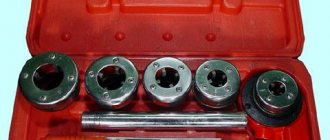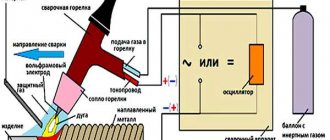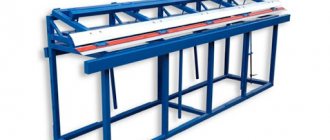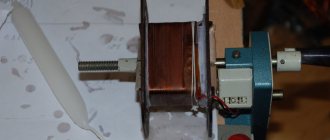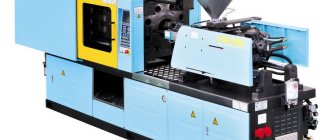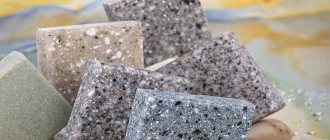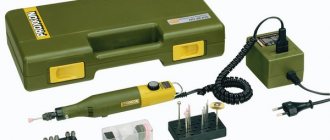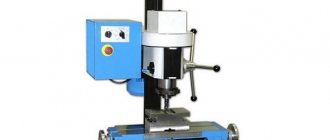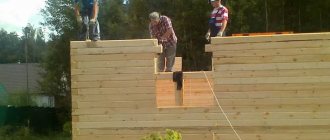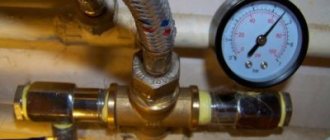5966
In dental practice, doctors use many tools and devices that allow both diagnosis and treatment.
However, many people associate an appointment with a dentist primarily with the characteristic whistling sound of a working drill.
This is in fact not only one of the most important, but also an absolutely irreplaceable tool, without which dental treatment would be difficult and of insufficient quality.
What it is?
A drill is a device that provides movement of the instrument with which dental procedures are performed . The device is rotary - this means that the movements performed are rotational.
The rotation speed of the instruments is high enough to perform many operations performed at dentists of various specializations.
The operating speed of these devices can reach 40 thousand revolutions per minute . Due to this, the sensations experienced by the patient are minimal. He does not feel pain, but many people develop a persistent dislike for the drill.
The fact is that during operation, the drive parts interact with each other, and their interaction generates a sound - whistling and quite high-pitched.
Photo: dental drill
Its tone affects the patient. At the same time, doctors do not experience such sensations, since they hear it constantly, get used to it and stop reacting.
An additional disadvantage and a negative factor influencing the attitude of patients is the vibration that will inevitably arise when working at such a speed, especially since the instrument comes into contact with hard tissues in the oral cavity, which enhances the perception.
Another feature of the operation of this dental apparatus is the rather unpleasant odor that occurs during the preparation of hard tissues . The tool seems to cut off parts of the tissue with fine dust, which is highly volatile.
Due to the high speed of movement, these particles heat up and, when they hit the corresponding receptors in the nose, cause associations with burnt bone. Water is used to cool the working tool, but it cannot completely prevent the spread of tissue particles removed from the tooth.
The best thing a patient who experiences extremely negative sensations just at the sight of a dental drill can do when entering the office is to relax as much as possible.
It must be remembered that all the unpleasant nuances of its operation are just technical features that should be treated like the engine of a running car.
To increase functionality, dental drills can be equipped with additional tools that are used to perform a wide range of operations with the highest precision.
Let's figure out whether pregnant women can have their teeth treated with anesthesia, is there an alternative?
This article presents the average prices for silvering baby teeth.
Here https://www.vash-dentist.ru/lechenie/zubyi/vse-o-mestnoy-anestezii-v-stomatologii.html we provide a list of contraindications to local anesthesia in dentistry.
Color engraving
To make the drawing look more clear and beautiful, use a glass pencil or ink.
In order for the effect of using these tools to remain as long as possible, the surface is coated with colorless varnish.
You can make the drawing clearer using a needle and oil paints. This set allows you to scratch auxiliary lines of the pattern, which are subsequently covered with paint.
Artistic color engraving allows you to make the product colorful. To do this, those elements that do not need to be painted are coated with transparent varnish.
How to blacken a metal object? Special equipment is not used for this, but the following substances are required: sulfur and potash (potassium carbonate) in a ratio of 1:2.
This composition must be put on fire; to do this, it is poured into a tin can. The mixture must be constantly stirred, and the fire should not be high.
The mixture is removed from the heat when it turns black. Before this, it will need to be ground in a mortar; after the fire, it is also placed in a mortar and ground again (cooled).
Blackening occurs as follows:
- Water is added to the resulting mixture (1:9);
- A brass object is placed in the solution;
- It is heated until the product acquires the desired shade.
You can make the background dark before applying the drawing. In this case, varnish is not needed.
You can make an object brown with your own hands by keeping it in a solution of zinc chloride and copper sulfate with the addition of water (100g, 100g, 200g, respectively).
Hand painting in steel gray color is obtained from 1 liter of water, two grams of ordinary salt and two grams of a mixture of sulfur and potash.
The orange-red color is obtained from a solution of potassium sulphide: 1 gram of the substance per 250 grams of water.
Upon completion of work, the varnish is erased.
The blackening of an object and the blackness we know are two different things. The technique used to create niello is mechanical; it cannot be done with your own hands.
Application
Most often, it is used by therapists when treating cavities damaged by caries, cleaning and grinding hard dental tissues, fillings, and many other manipulations necessary during treatment.
Periodontists also use the drill . With its help, you can quickly and efficiently remove deposits formed on the enamel surface.
Orthopedists also use this device in their work. It may be required to cut bone tissue and smooth it. He can also handle the processing of the bed for the installation of various orthopedic structures, but the most common manipulation is considered to be the preparation of hard dental tissue for various purposes.
Dental technicians also use different types of drills with a wide variety of tips . The properties of these devices turn out to be indispensable in the manufacture of artificial dental crowns and various prostheses.
After fitting, additional processing may be required, which is also carried out using a drill.
Components
In one form or another, different models and types of dental drills contain several basic design elements that ensure the operation of the entire device and increase its functionality.
- Nozzle .
A direct working tool used for processing fabrics or performing other manipulations. Most often it is a bur, which is used to remove tissue by cutting. Additionally, grinding attachments, discs, etc. with different sizes and other parameters can be used as attachments for the drill. - Tip .
Serves to secure the nozzle, that is, it is an intermediate link for transmitting torque. In dental practice, both straight and bent tips are used. The choice of a specific type depends on the convenience of manipulation, that is, the location of the area requiring treatment, and the characteristics of the clinical picture. - Drive unit .
The most important part of the device, which directly transmits torque to the tools, is a micromotor or turbine, which operate on different principles. It is by the type of drive used that different types of drills will differ. - Shlens .
This part serves to connect the device with the main part - the control unit or a separate dental unit. Its presence allows, if necessary, to place the main part of the structure in a separate room in order to minimize the level of noise generated.
Engraving pen
Manual engraving at home requires: - A graver - A metal workpiece - Something solid to hold the metal workpiece, possibly a vice
For beginners, we recommend using a softer metal, such as copper or aluminum, as a workpiece.
A shtikhel is a rod, usually 120 -130 millimeters in size. The tip of the gravel is cut at a certain angle and sharpened. The second tip is inserted into the handle, usually wooden. Engraving pens come in various shapes and differ in the width of the working surface. If you don’t have this tool, you can easily make it yourself if you have the right materials. To make a graver you need tool steel. The metal used in ball bearings and springs is excellent here. To make a cutting surface, you need to use a cutter, a needle file, a file, cutting it into thin strips. The best material to make an engraving pen is P18 steel. You can also make a graver from circular saw blades. Then we sharpen the workpiece at an angle, which will allow us to make a notch of the required width. If we talk about the handle of a wooden pen, then it must be made of hardwood, with a width convenient for the master to hold in his hand. The mushroom shape is, in our opinion, the best option.
Read also: What are sexually transmitted diseases
Kinds
The main feature by which different types of dental drills differ is the type of drive used in the design.
Pneumatic
The most commonly used drills are those with a pneumatic or pneumatic turbine drive. Compressed air under high pressure is transmitted from the compressor through a special hose to the turbine tip.
Thanks to the characteristics of the compressor, it was possible to increase the rotation speed of the tip to almost 300 thousand revolutions. Due to this, the doctor has the opportunity to perform very precise treatment with complete painlessness for the patient , and also in less time.
At the same time, pneumatic turbine machines do not have high torque. Because of this, for high-quality work with some filling materials and tissues, other types of devices are used .
Electrical
A more correct name would sound like electromechanical. In rare cases, you can find such machines, the basis of which is a multi-link belt drive, but now they are used very little.
These old, Soviet devices were distinguished by relatively low rotation speeds and patients felt quite strong vibrations during the treatment process, which gave rise to pain during the preparation of hard tooth tissues.
At the moment, this type of drill, used during the USSR, has been replaced by electromechanical ones with a micromotor, which eliminate the listed disadvantages.
The rotation speed can reach 40 thousand revolutions per minute, which is less than that of pneumatic devices. However, there are quite high torque values , which plays an important role for the comfort of both the patient and the specialist.
Devices of this type can be used not only for pre-treatment and preparation of hard tissues and treatment of distant teeth, but also as a tool used for fitting dentures and precision processing of artificial crowns.
The device creates a fairly high noise level, so it is most often installed in a separate room. This also allows you to connect multiple installations to it.
Laser
This is a new generation of devices that do not have a rotational motor at all. Light energy is used as a tool here. Preparation of hard tissues occurs safely, quickly and completely without pain .
However, chemical filling materials cannot be used for filling after using a laser. In this case, fillings are placed only from light-curing materials.
Erbium lasers are most often used to treat hard tissues in dentistry.
A few words need to be said about the components of the laser drill, since its design is somewhat different from those listed:
- base unit – regulates the frequency and power of the light flow;
- foot pedal – switches on/off;
- light guide – directs and transmits the flow of light to the tip;
- tip - performs direct manipulation.
Portable devices
Portable types are incredibly convenient, as they allow you to provide dental care outdoors - in the field, at home, in rural clinics where there is no electrical supply.
The devices are small in size and equipped with a separate power source .
And the use of brushless micromotors, such as in the Forte 200A model, has made it possible to minimize the need to repair faults.
For one of the latest modernizations of a traditional drill, watch the video:
General technology
The technique can be manual or mechanical (various equipment is used).
It is also divided into line and armor:
- The line engraving technique is performed by applying contour lines and strokes to an object. Metal carvings are not deep, affecting only the surface of the object;
- Defensive, otherwise called three-dimensional, mechanical deep technique allows you to achieve a three-dimensional pattern. See photo.
Incisive engraving is performed with a special tool – a graver.
If you ask yourself how to make it yourself and where to buy these tools, then the answer is simple: this tool is sold in the same stores where you can find various art supplies.
The finest lines are made with a Messer-Stichel. If you need to make parallel lines, they are made with a rap pen.
To perform high-quality work, this tool must be sharpened; for this, a fine-grained whetstone is used, which is pre-moistened with water or oil.
The graver is brought “to readiness” with a leather product (you can take an old belt) coated with chromium oxide.
Manual processing of small items at home requires the presence of a special pillow; you can easily make it yourself: take two pieces of fabric of the same size (round or square), sew them together along the edge, stepping back from it a little, but you need to leave a small gap in order to so you can pour sand inside.
The prepared form is turned inside out, dried sand is poured in, and the remaining hole is sewn up.
The cushion engraving tool is ready.
How to properly hold the instrument in your hand?
This should be done as if you were holding a regular ballpoint pen: the index finger should be on top of the blade (that’s what the metal part of the cutter is called), and the thumb should hold it on the side.
Work must be done on your own.
In the case when you need to change the direction of the pattern, unfold the pillow with the object on which the element is being applied, but do not change the direction of movement of the hand.
What else is useful to know about incisors?
To do your own engraving at home, it is advisable to first practice so that the carving turns out beautiful in the end.
It is better to purchase a set of tools: it is better to apply rounded lines with a square section of cutters, and it is better to make straight lines with a round section.
During work, burrs very often appear, which cannot be avoided, but they can be removed with the help of a scraper.
You can make the scraper yourself. To do this, you will need a file, from the edges of which you need to grind off the notch.
Before application, the surface must be cleaned with fine sandpaper and polished. A special polishing paste is used for polishing.
The paste can be easily replaced with chromium oxide (oil paint). The surface of the object must be thoroughly and vigorously rubbed. The paste is ground with a thick piece of leather.
What does the price depend on?
You can trace the dependence of the price of a dental drill on a wide variety of factors , some of which are related only to the general laws of the market.
Among them:
- fluctuations in foreign currency exchange rates;
- choice of domestic or foreign manufacturer (an inevitable increase in cost due to transport costs);
- seller’s pricing policy (markups, discounts, promotions, etc.);
- buying a new or used device;
- the region in which the purchase is made, and much more.
The main factor influencing the cost is the specific type of installation being purchased. At the same time, among the same type of machine there may also be different prices, which in this case reflect differences in characteristics - power, additional functions, and so on.
Speaking about a specific numerical expression of price, we can give the average cost for individual types of drills :
- pneumatic - about 28-32 thousand rubles;
- electromechanical – 23-25 thousand;
- combined devices - 55-60 thousand;
- laser - more than 1 million rubles;
- portable - about 7-10 thousand.
Let's find out whether it hurts to remove a wisdom tooth, how necessary is this procedure?
In the next publication we will tell you what drugs are used for conduction anesthesia in dentistry.
Here https://www.vash-dentist.ru/lechenie/zubyi/emal/giperesteziya-simptomyi-raznovidnosti-terapiya.html we will talk about the features of the manifestation of hyperesthesia of dental enamel.
Below is the estimated price at which you can buy some models from different manufacturers.
- Selena-2000 (portable, electric) – about 24 thousand.
- RESTAR-03 (portable electric) – 17 thousand.
- Marathon N7 (portable electric) – 9,500 rubles;
- BPS 300/40-TECH (pneumatic, stationary on a stand) depending on additional equipment - from 17 to 25 thousand.
- BPK-01M (BPK-02/01) (pneumatic, stationary, has a built-in compressor) - 32-35 thousand.
- Mobilico MBD-110 (portable, combined) – 67-70 thousand.
- Waterlase C-100 Biolase (hydrokinetic laser for hard and soft tissues) – 1.2 million rubles.
Many people hate and fear going to the dentist. By learning more about one of the most important tools in dental practice, the drill, they can get rid of this aversion.
And regular preventive visits to the doctor will help prevent many problems with the teeth and the entire oral cavity.
If you find an error, please select a piece of text and press Ctrl+Enter.
Tags: treatment, operations in dentistry
Did you like the article? stay tuned
Previous article
What are dental consumables?
Next article
Why is it necessary to install a gum former?
